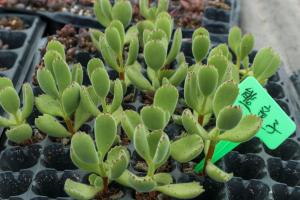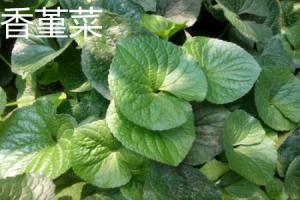1、 Camellia
Cut off over dense branches
▼ as shown in the figure below, the spacing between branch A and branch B and branch D is dense, so branch a can be cut off. B. C branches are parallel and closely spaced, and one of them can be cut off

▼ in the figure below, the branches at the top are very dense, so we can consider cutting off some of them, × Indicates the location of the trim. Cut as close to the branches as possible

After pruning

Cut off the dead branches at the top
▼ if the top bud head is necrotic, it should be pruned. First, it can accumulate nutrients and reduce waste; Second, make room for the growth of the back branches. The position indicated by the double arrow is the pruning prompt of shrinking branches

Comparison chart after trimming

Cut off the lower leg branch
▼ A and B are the lower foot branches, and the branch potential (weaker than C branch) will consume too much nutrients of the plant, so they should be cut off. Cut as close to the branches as possible

▼ the red fork part is also the lower foot branch, and the branch potential (weaker than branch A and b). If it is left, it will consume too much nutrients of the plant, so it should be cut off

Comparison chart after trimming

Cut off overlapping branches
▼ the overlapping young branches sprouted on the main rod can be considered to be cut off to accumulate nutrients and reduce waste. The Red Cross is the pruning prompt. You can trim at the position indicated by the double arrow

Erase axillary buds
▼ the dense branches at the top can be removed, and the branches with red fork are pruning tips; The arrow shows axillary buds, which should be erased at the same time

Comparison diagram after trimming

▼ the leaf buds that cannot grow normally should be cut off, and the position shown by the double arrow is the pruning prompt

▼ the downward and transverse leaf buds shall be erased, as shown by the arrow

▼ the arrow shows the lateral (auxiliary) buds, which should be erased. If the buds are not wiped in time, parallel thin and weak branches will be produced. You can see the second picture below

If you don't erase it, it will eventually grow into the following figure. Branch a is a branch that doesn't wipe the bud in time. The main bud grows branch B and the lateral bud grows branch C. at this time, cut off branch C, which can be in red × Partial trim

▼ the overlapping horizontal buds behind the flowers should be cut off, which is the one pointed by the arrow

▼ the arrow shows axillary buds, which should also be erased in time. If they are not removed, it is easy to separate nutrition

▼ the branches on the left in the figure below, although with buds, are relatively thin and weak. Therefore, they should also be cut off to avoid nutrient consumption

Comparison chart after trimming

Cut off the branches after the flowers
▼ branch a is the short branch with flowers in that year. It will consume too much nutrients after flowers, so it should be cut off. Some branches with red fork are pruning tips. The arrow shows axillary buds and should be erased

How to leave branches
▼ 1-2 branches can be considered to be left on each strong branch, the tender branches of the red fork part should be erased, and the a branch can be considered whether to wipe according to the modeling needs

Excessive branch retraction
▼ if the branches are too high, they should be retracted and pruned to make new buds sprout at the lower part of the cutting mouth, and the plants will be more plump. The horizontal line position shown by the double arrow is the pruning prompt

2、 Gardenia jasminoides
Gardenia before pruning

Cut off parallel branches
▼ the branches with parallel and short spacing can be considered to be cut off, and the red fork is the pruning prompt

Comparison diagram after trimming

Cut off overlapping branches
▼ the branches that overlap and cross inward can be considered to be cut off, and the red fork part is the pruning prompt

Comparison diagram after trimming

Cut off the multi headed branches
▼ remove the weak branches and leave the strong ones. The red fork is a pruning hint

Comparison diagram after trimming

Remove tillers
▼ too many and too dense tillers (Miscellaneous branches germinating from the foundation) at the pile head hinder the modeling of the plant. Plants that consume too much nutrients need pruning

Comparison diagram after trimming

Remove excess buds
▼ multiple flower buds are weak and strong. If there are multiple flower buds on the same branch, at most two strong buds can be left. red × It's the part that can be cut off

Effect after trimming

Root pruning
If the soil is not turned over and the basin is replaced in time, the final result will be the following figure. In this way, the roots are covered with the basin wall, the old and new overlap, and even some roots have been damaged. The final result is to affect the growth of plants

After dispersing the soil mass, it is found that the root system is in the shape of tumor nodes. This situation is generally due to the long planting time of the plant (for several years), the aging of the plant and the decline of the root system. There is also a possibility that the pot is not changed in time, and the root system is choked into tumor nodes. Generally, if the root system becomes like this, it needs to be eliminated in time. If you want to develop bonsai, you can cut off the nodal root system and replant it

Another example is the root system like the one shown in the figure below. Although there is no nodal shape, the end of the new root has also been damaged because the flowerpot is too small. Similarly, the damaged root system should be trimmed and then put into the pot

Pay attention not to damage the original intact root system when cutting off the old root. You can wash the root system completely with water and then cut off the necrotic part of the root system. As for how to distinguish the good root system from the bad root system, you can look at the place pointed by the arrow in the figure below. Are the colors up and down different? The black part is the necrotic part. Just cut it off

Effect drawing after trimming

3、 Osmanthus
Cut off weak branches
▼ weak branches with dense sprouting spacing on strong branches can be considered to be cut off to accumulate nutrients and reduce waste. The Red Cross is the pruning prompt

Comparison diagram after trimming

▼ remove the weak branches and leave the strong ones. The red fork is a pruning hint


Cut off the overlapping young branches on the trunk
▼ the overlapping young branches sprouted on the main rod can be considered to be cut off to accumulate nutrients and reduce waste. The Red Cross is the pruning prompt

Comparison diagram after trimming

Inner transverse branch pruning
▼ the double arrows show the inner horizontal branches, and the branches with red forks are pruning tips

Inner bore branch pruning
▼ the weak branches in the inner bore with dense spacing can be considered to be cut off, and the red fork part is the pruning prompt

Parallel branch pruning
▼ A and B are parallel branches. If the spacing is dense, B can be considered to be cut off, and the red fork is a pruning prompt

The trimmed cut shall be as close to the branches as possible and smooth

Osmanthus top pruning
▼ weak branches with dense sprouting spacing at the top can be considered to be cut off to accumulate nutrients and reduce waste. The Red Cross is the pruning prompt

Comparison diagram after trimming

▼ branches with dense sprouting spacing at the top can be considered to be cut off to accumulate nutrients and reduce waste. The Red Cross is the pruning prompt

Comparison diagram after trimming

▼ the double arrows show the inner horizontal branches, and the branches with red forks are pruning tips

Osmanthus pile head trimming
1. For the branches that have been cut to density, the red fork part is the pruning hint

Comparison diagram after trimming

2. According to the needs of potting, 2 ~ 3 branches are left at the pile as the trunk, and the rest can be cut off. Cut as close to the branches as possible

Finally, the main rod is trimmed and shaped

Panoramic view of pruned osmanthus

Cut sweet scented osmanthus branches

4、 Jasmine
Jasmine before pruning

Cut off overlapping branches
▼ a, B and C are cross and transverse overlapping branches, D and E are cross and transverse overlapping branches, and the spacing between F and G is dense. It can be considered to cut off g and use red × Just cut off the marked places

Branch retraction
▼ branch a is a strong branch with crazy growth and preliminary setting, which can be cut back, and can be cut off at the horizontal line position shown by the double arrow. It is a pruning prompt with some branches with red fork

▼ branch a is the diseased (withered) branch, which should be cut off, branch B is the crazy long branch, and the crazy long branch is the branch that gets water and fertilizer and grows vigorously. The branch should be cut back to make it grow side branches

Cut off old branches
▼ Jasmine blooms most vigorously with 3-5-year-old seedlings, and then ages year by year. It must be re cut and renewed in time
A. B refers to 4-5-year-old branches, C refers to 2-year-old branches, and D refers to current year branches. It can be considered to cut branches a and B from the base. If branches a and B remain in the mother plant, the lateral branches of branch germination are also weak. If pruning is not considered temporarily, the plants can be eliminated at an appropriate time

▼ branch A and side branch B, which are 4-5-year-old branches, should be pruned according to the principle of "removing the weak and retaining the strong, removing the old and retaining the new", leave branch C (New), and cut and retract branch C accordingly, that is, where the red double arrow indicates, let it grow side branches. The horizontal line position shown by the double arrow and some branches with red cross are pruning tips

Effect after trimming

(Note: the pictures come from the Internet and the copyright belongs to the original author. Due to restrictions, some pictures cannot be found and the author has not been marked. If your rights and interests are infringed, please contact Huahua wechat qdxixi or qq1273160598 for deletion or copyright payment.)< span>

 how many times do yo...
how many times do yo... how many planted tre...
how many planted tre... how many pine trees ...
how many pine trees ... how many pecan trees...
how many pecan trees... how many plants comp...
how many plants comp... how many plants can ...
how many plants can ... how many plants and ...
how many plants and ... how many pepper plan...
how many pepper plan...






























